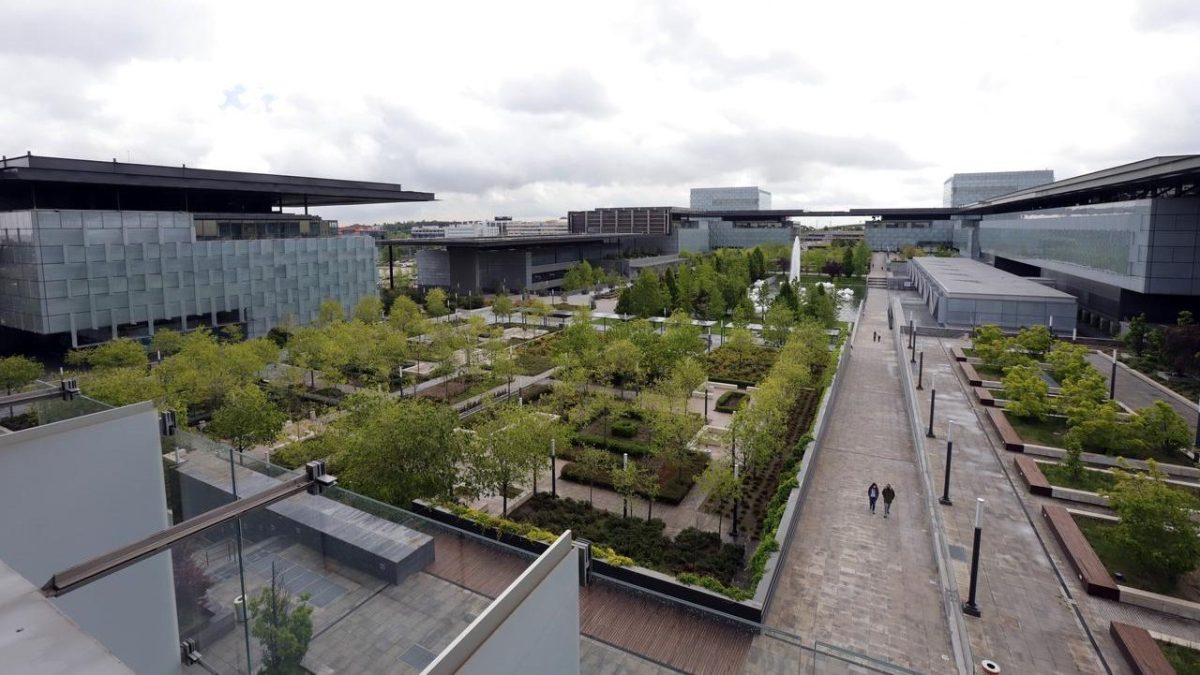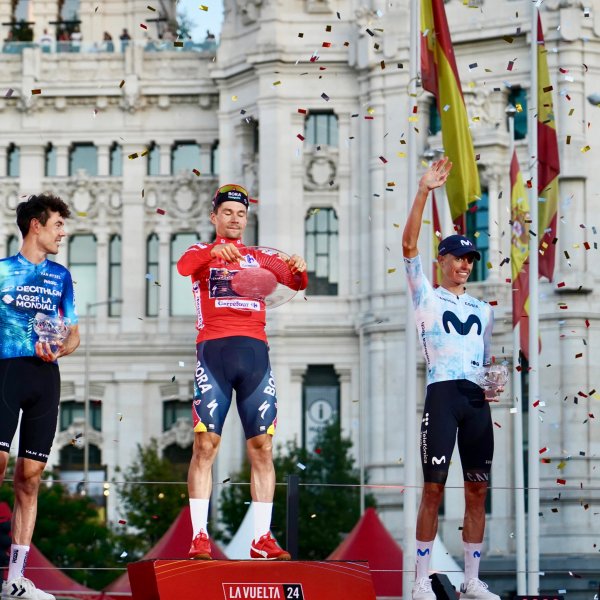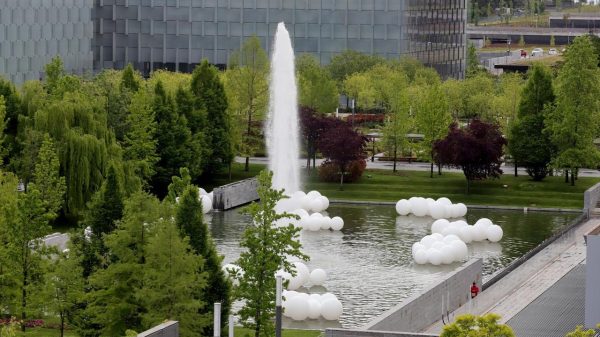Some of us are very lucky, we work at Telefónica, in Madrid and in a privileged location. We start with western square:
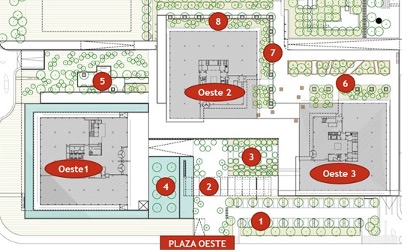
We start our walk in the visitors’ car park, where we find rows of Lime trees (Tilia cordata) and between them bushes of Cherry Laurel (Prunus laurocerasus).
As you enter the square, you can see specimens of the Jupiter Tree (Lagerstroemia indica) and the Palm tree (Trachycarpus fortunei).
Leaving the cafeteria in the square on the right, we get into position to climb the stairs on the way to Oeste 3 and, in my humble opinion, we can observe one of the best postcards of flora that we have in the Telephone District. In front of us we can see beautiful specimens of Palmera excelsa (Trachycarpus fortunei) between areas of New Zealand Flax (Phormiun tenax). We like this area so much that we retrace our steps down the stairs on the way to the Oeste 1 building to enjoy this beautiful area from another perspective.
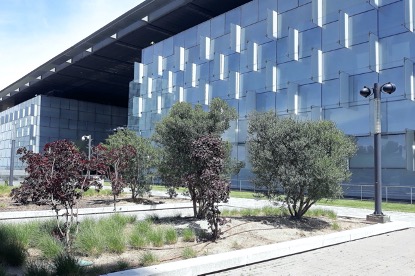
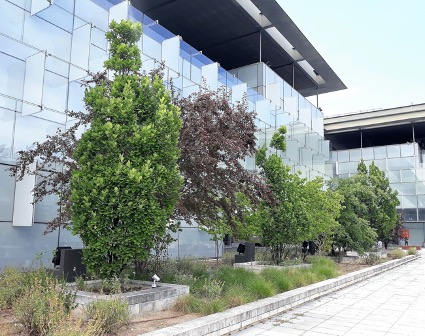
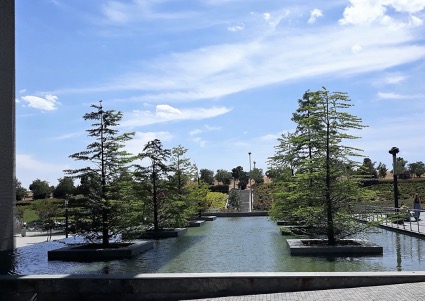
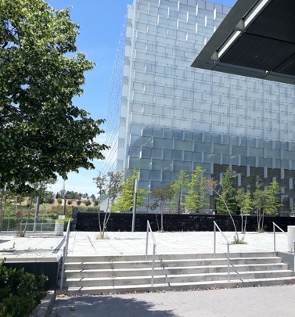
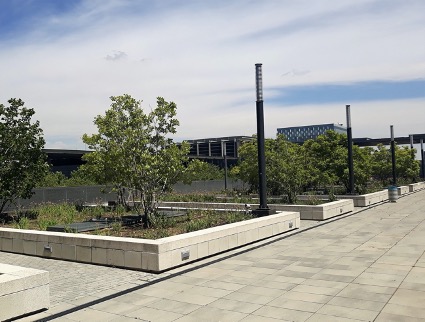
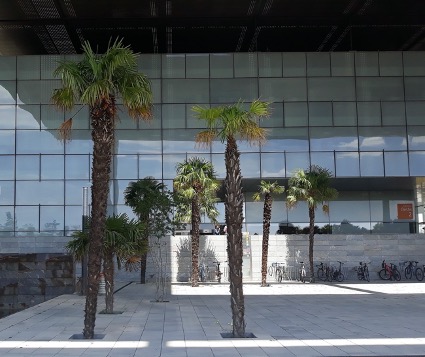
We continue our way towards the West Building 1 and we can see eight specimens of Bald Cypress (Taxodium distichum) present in all the squares.
At the end of the ramp, we head off to the right side of the West 1 building to an area known as the West Sandpit. In this area we can find olive trees (Olea europaea), wig trees (Cotinus coggygria) and areas of foxtail (Pennisetum spp).
Don’t miss the next instalment to find out about the biodiversity in the other squares of these beautiful Telefónica offices.
Since we can’t go to the back of the West 2 building without stepping on the grass, we go past the front door to the other Magnolia Viewpoint. Next to the West 3 building we can see Oak (Quercus spp) and Foxtail (Pennisetum spp). And in the centre of the area several specimens of Chinese Magnolia (Magnolia x soulangeana) with areas of Common Iris (Iris germanica).
We proceed to the side of the West 2 building where we find Oak (Quercus sp.), Cotoneaster (Cotoneaster horizontalis), Escalonia (Escallonia floribunda), Fotinia “Red Robin” (Photinia x fraseri) and Fern.
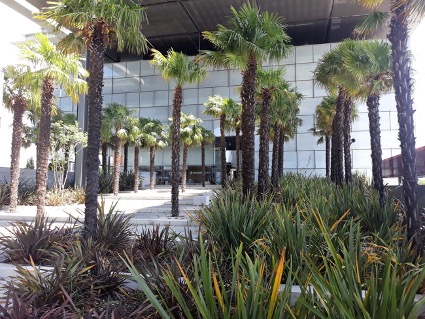
Palm excelsa and flax
Finally, if we follow the corridor at the back of the West 2 building, we can see eight specimens of Oak (Quercus sp.) located between the wooden benches, Fern and Sacred Bamboo (Nandina domestica) which is striking for its bright red fruit.

